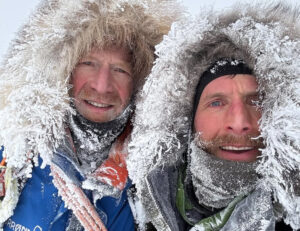Studying polar bears — particularly their movements across the vast and inhospitable range they inhabit — is hard. As any reader of this site knows, the Arctic is no joke. On top of that, utilizing helicopters and dart guns to study the animals is invasive and disruptive, and the life of a polar bear is difficult enough these days.
But luckily for the scientists who study them, polar bears don’t wear shoes.
That’s a relevant statement, I promise.
When polar bears walk across snow, they leave tiny flecks of their DNA behind. Now, a group of scientists has figured out how to collect and identify that DNA with specific bears. The researchers hope the new method will mean fewer instances of getting up close and personal with the bears, always a good thing when talking about an apex predator that weighs more than a grand piano.
How they do it
To collect the samples, scientists associated with the North Slope Borough Department of Wildlife Management in Utqiaġvik and the Alaska Department of Fish and Game used steril trowels to scrape up snow from 13 polar bear tracks found in Alaska’s North Slope region. Then, they brought the resulting samples to a lab and processed them. No contact with bears required.
“To our knowledge, this is the first time that polar bears have been individually identified by genotype and sex using e-DNA collected from snow. This method is non-invasive, could be integrated into genetic mark-recapture sampling designs, and addresses some of the current challenges arising from poor sea ice conditions,” the paper’s authors wrote in its introduction.
“It also can involve, engage, and empower Indigenous communities in the Arctic, which are greatly affected by polar bear management decisions,” they continued.
The method has a decent success rate. Six of the 13 bear tracks studied yielded DNA the team used to identify individual bears. The scientists published their findings in the journal Frontiers of Conservation Science earlier this month.
More work to do
“To think that a polar bear walking across the sea ice leaves enough DNA in its footprint to identify and genotype a bear is astonishing,” retired biologist Craig George, who was not involved with the study, told the Anchorage Daily News. “No bears are harassed or even bothered. This can be expanded to other communities, with local hire, and getting locals interested in the science.”
As sea ice shrinks, monitoring polar bear populations is critical. And those same conditions make traditional polar bear study methods even more challenging than they already were. That makes this study and its ramifications potentially game-changing for the scientific community. But the paper’s authors admit that there is more to do before the method really makes an impact.
“While it’s very exciting, there’s still much work to do before this can be considered a useful tool for management,” Andrew Von Duyke, the paper’s lead author, shared with the Anchorage Daily News. “But, we’re making incremental progress.”






